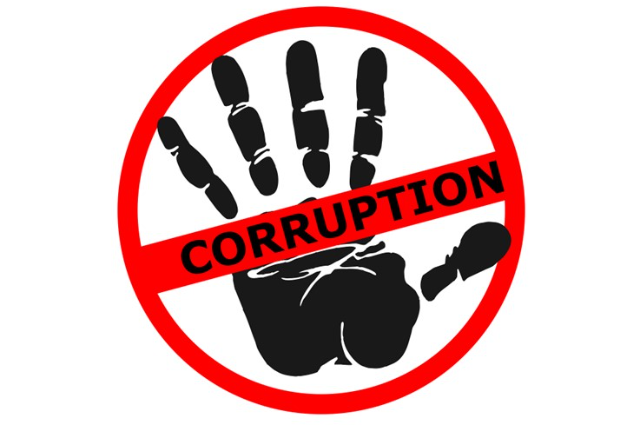
Image by Zelandia from Pixabay
Introduction
Corruption is a deeply ingrained issue in India, affecting all strata of society, from the highest government offices to local administrations. It poses a severe threat to democracy, hampers economic growth, and leads to the misallocation of resources. Despite numerous efforts to combat this problem, corruption remains a significant hurdle in India's path to development.
Historical Background
Corruption in India has a long history, dating back to the colonial era when British officials frequently exploited their positions for personal gain. Post-independence, the newly established bureaucratic structure, though designed to be efficient and equitable, became a breeding ground for corrupt practices. Over time, corruption became deeply entrenched in both the political and administrative systems of the country.
Types of Corruption
Corruption in India takes various forms:
- Bribery: This is the most prevalent form of corruption, involving the exchange of money or favors for influence or actions. Bribes are often given to secure government contracts, avoid penalties, or gain favorable decisions.
- Embezzlement: Public funds intended for development projects or welfare schemes are often diverted by officials for personal use, leading to inadequate implementation of these initiatives and affecting service delivery.
- Cronyism and Nepotism: In India, personal connections often outweigh merit, leading to jobs, contracts, and opportunities being awarded based on relationships rather than qualifications. This practice undermines efficiency and erodes public trust in institutions.
- Judicial Corruption: Although the judiciary is supposed to be independent, corruption has been reported at various levels, from lower courts to higher judicial offices. This weakens public confidence in the legal system and delays justice.
- Electoral Corruption: Elections in India are frequently marred by vote-buying, voter roll manipulation, and the misuse of state resources by those in power, undermining the democratic process.
Causes of Corruption
Several factors contribute to the persistence of corruption in India:
- Complex Bureaucracy: India's large and intricate bureaucratic system creates numerous opportunities for corruption. The excessive red tape often leads people to offer bribes to expedite processes.
- Lack of Transparency: Many government procedures lack transparency, making it difficult to hold officials accountable. While the Right to Information (RTI) Act has helped in some areas, its implementation is inconsistent.
- Weak Law Enforcement: Although India has several anti-corruption laws, enforcement is often weak. Corrupt officials and politicians frequently escape punishment due to legal loopholes, lengthy judicial processes, or political influence.
- Cultural Factors: In some cases, corruption is seen as a normal part of doing business or accessing public services. The expectation of bribes is often regarded as routine when dealing with government officials.
- Economic Inequality: High levels of poverty and unemployment can drive people to engage in corrupt practices as a means of survival. At the same time, the wealthy and powerful often use their resources to manipulate decisions in their favor.
Impact of Corruption
The impact of corruption in India is profound and far-reaching:
- Economic Impact: Corruption is a major obstacle to economic growth. It discourages foreign investment, distorts markets, and reduces the efficiency of public spending. Estimates suggest that corruption costs India a significant percentage of its GDP annually.
- Social Impact: Corruption exacerbates inequality by diverting resources away from those who need them most. Public services such as healthcare, education, and infrastructure suffer as funds are misused, leading to poor outcomes for the general population.
- Political Impact: Corruption erodes trust in public institutions and undermines the legitimacy of the government. When citizens believe their leaders are corrupt, they are less likely to engage in the political process, weakening democracy.
- Environmental Impact: Corruption in environmental regulation can result in the approval of harmful projects, illegal mining, and deforestation, causing long-term damage to the environment and communities.
Efforts to Combat Corruption
India has taken several steps to combat corruption, with mixed results:
- Legislative Measures: Laws such as the Prevention of Corruption Act, Lokpal and Lokayuktas Act, and the Whistleblower Protection Act aim to curb corruption. However, their effectiveness largely depends on proper implementation and enforcement.
- Digital Initiatives: The government has introduced digital platforms like the Government e-Marketplace (GeM) and the Direct Benefit Transfer (DBT) system to reduce human intervention in transactions and ensure benefits reach the intended recipients.
- Civil Society and Media: Activism and investigative journalism have played critical roles in exposing corruption. Movements like India Against Corruption and the efforts of organizations like the Central Vigilance Commission (CVC) have brought the issue to public attention.
- Judicial Interventions: The judiciary has taken suo motu cognizance of corruption cases and passed several landmark judgments aimed at curbing corruption. However, judicial activism alone cannot replace the need for systemic reforms.
Conclusion
Corruption remains one of the most significant challenges facing India today. While there have been some successes in the fight against corruption, much more needs to be done. A combination of strong laws, vigilant enforcement, and active public participation is essential to effectively tackle this issue. Reducing corruption is not just about punishing the guilty but also about fostering a culture of transparency, accountability, and integrity that will ensure a brighter future for India.
